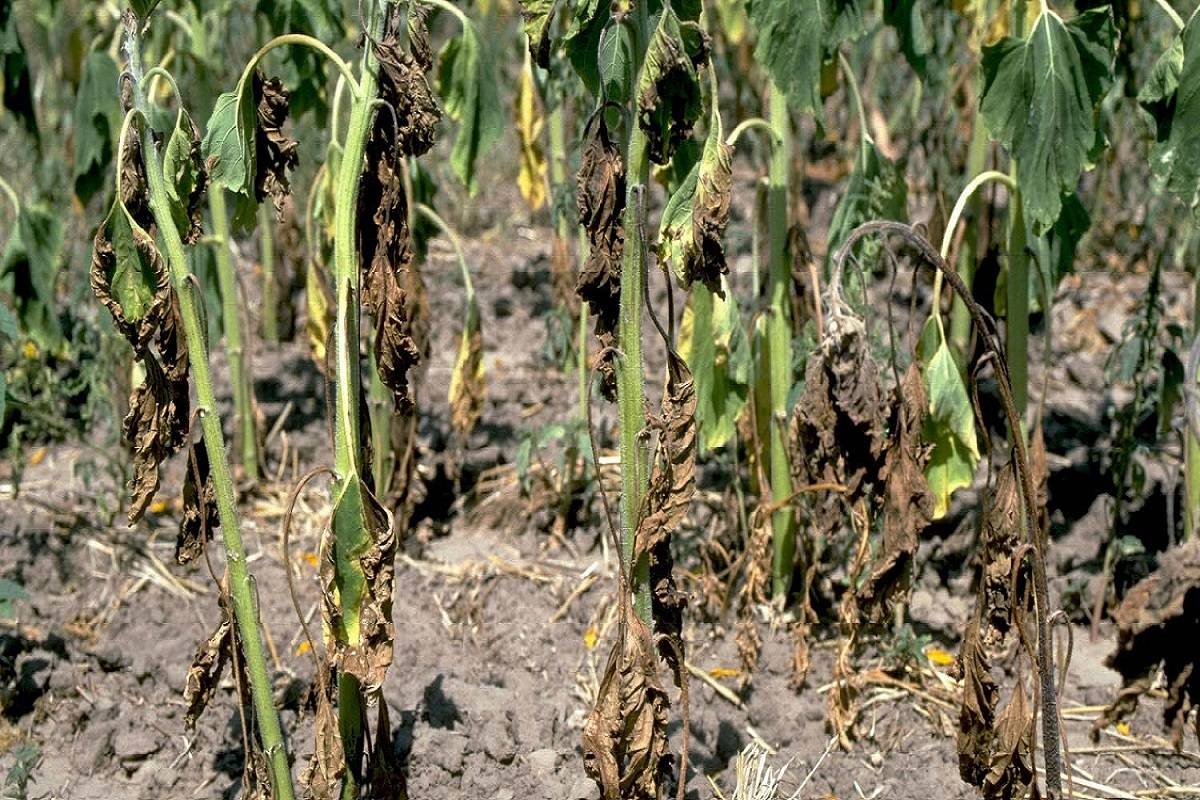
Fusarium wilt is a plant disease that affects a wide variety of plants. It is a deadly soil-borne disease that blocks the flow of water and vital nutrients in the plant causing it to wilt and eventually die. Many cash crops such as eggplant, tomatoes, potatoes, broccoli, kale, and bananas are susceptible to this disease, which thrives in warm and dry summer conditions.
What is Fusarium Wilt?
Fusarium wilt is a common plant disease that is caused by Fusarium oxysporum, a soil-inhibiting fungus. Many plants are susceptible to this disease, including but not limited to important cash crops such as legumes, melons, sweet potatoes, and tomatoes. Fusarium oxysporum can live in the soil indefinitely even without access to a living host plant. It reproduces by making spores and can persist in dry soil conditions.
It also thrives in soil temperatures above 24 degrees Celsius. Therefore, lowering the temperature is a method to prevent this disease in plants that are susceptible to it. This fungus enters the plant via water-conducting tissue in the roots that have been harmed by cultivation mechanisms or other pests.
The fungus then reduces the movement of water causing the leaves to turn yellow. In extreme cases, the roots completely rot and decay. This disease is also spread through insects and garden equipment. Other than warm soil temperature, low soil moisture also encourages this plant disease.
Fusarium Wilt Symptoms
Usually, you’ll start noticing the symptoms of this disease appear later in the growing season. At first, this disease attacks older leaves at the base of the plant and then progresses toward the younger leaves at the bottom. When left untreated, the infected plant will end up dying. Fusarium wilt causes the following symptoms-
-
Premature yellowing of the leaves.
-
Stunted growth of path.
-
Death of seedlings.
-
Stunting of growth and yellowing of entire older plants.
-
Leaves close to the base of the plant start turning yellow and then completely dry.
-
Plants begin to wilt completely without any previous indication.
-
The xylem tissues turn brown.
-
The plant looks like it is on the brink of death.
How to treat and prevent Fusarium Wilt?
While growing crops and grains for commercial purposes, farmers take all the necessary precautions starting off with buying seeds of plants that are resistant to this disease. Purchase your seedlings or seeds from a reliable source. Before sowing the seeds, you can treat them with heat or get them fumigated by the vendor to ensure that there are no spores growing on your seeds.
You can also prevent this disease by neutralising or making the soil more basic in nature to limit its activity. This is because the fusarium fungi prefer a more acidic soil. If you have been treating plants for fusarium wilt, then make sure to clean the tools that were used before using them on not contaminated plants. You can soak your tools in a mild bleach solution in order to get rid of the fungus.
Stop using chemical and organic fertilizers that are high in nitrogen as it increases the susceptibility of this disease. You must also hand remove or apply weedicide to remove weeds from your field because they can carry the pathogen. There is technically no cure for this disease because fungicides are not effective on the fusarium fungus.
The best course of action is to limit its spread by removing the infected plants and burning them in order to reduce the number of spores present in the soil. Before planting new plants in the same soil, the fusarium spores can be killed by a technique called soil solarization. To solarize the soil, cover the soil surface with a clear plastic tarp during the hottest time of the year. This process will eliminate all soil-inhabiting pests such as insects, nematodes, weeds, etc.











